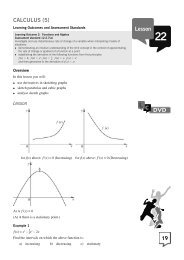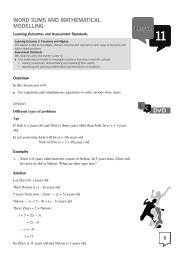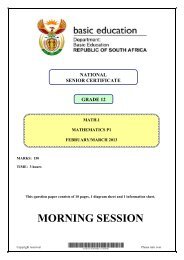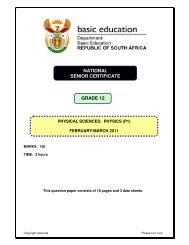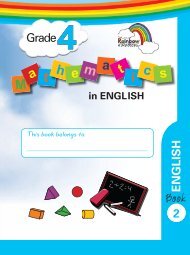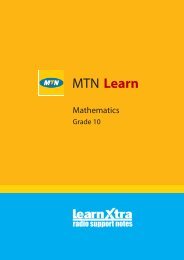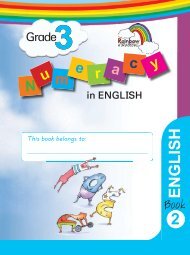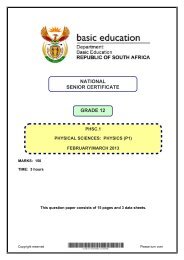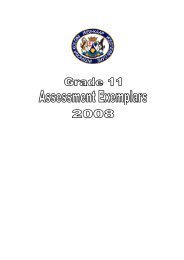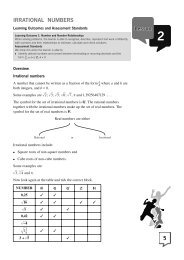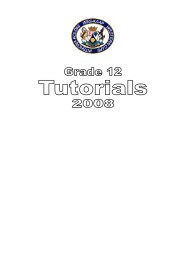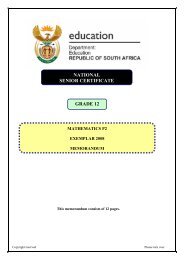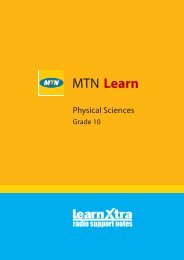Teacher's Guide Module 1 - Maths Excellence
Teacher's Guide Module 1 - Maths Excellence
Teacher's Guide Module 1 - Maths Excellence
You also want an ePaper? Increase the reach of your titles
YUMPU automatically turns print PDFs into web optimized ePapers that Google loves.
.......................ACTIVITY 2.7<br />
This activity exposes the learners to a variety of methods for addition. The learners may<br />
select the method that they find easiest from these.<br />
.......................ACTIVITY 2.8<br />
Learners must work without a pocket calculator, but may use it afterwards to check their<br />
answers.<br />
.......................ACTIVITY 2.9<br />
Adapt the allocated time as you think fit.<br />
.....................ACTIVITY 2.10<br />
First explain how the pocket calculator’s memory keys work during a class discussion<br />
before attempting the activity. Allow learners to compare their pocket calculators with<br />
each other and encourage them to test and use the keys as the class discussion<br />
progresses. Do some examples with the learners by way of a trial run. (Hint: It is easier<br />
to calculate the answers if the last bracket in the computation of the sum is done first and<br />
stored in the memory.)<br />
.....................ACTIVITY 2.11<br />
According to the minimum requirements of the RNCS, two “investigations” are required<br />
per semester. This activity can be placed in the learner’s portfolio for record purposes.<br />
The purpose of this activity is to investigate the different cash slips that we receive every<br />
day wherever we buy things, to analyse them and finally to decide, giving reasons, which<br />
are the best examples of such slips.<br />
LEARNING UNIT 3<br />
.......................ACTIVITY 3.1<br />
Before starting with Activity 1, the learners can do quite a bit of mental calculation with<br />
small minuends (orally, with teacher asking the questions), e.g. 34 – 5; 26 – 3; 52 – 4;<br />
etc.). A certain time limit can be set in Activity 2 (depending how fast / how slowly) the<br />
learner’s progress.<br />
.......................ACTIVITY 3.2<br />
Once this activity has been completed, learners’ knowledge with regard to Learning Unit 2<br />
can be tested. Learners can do the same exercise with Roman numbers (see Activity<br />
2.3).<br />
.......................ACTIVITY 3.3<br />
It is important that learners do this activity with full understanding of terminology (e.g. they<br />
should know that “decrease by” means “subtract”). The pocket calculator can be used to<br />
check the answers in this activity.



